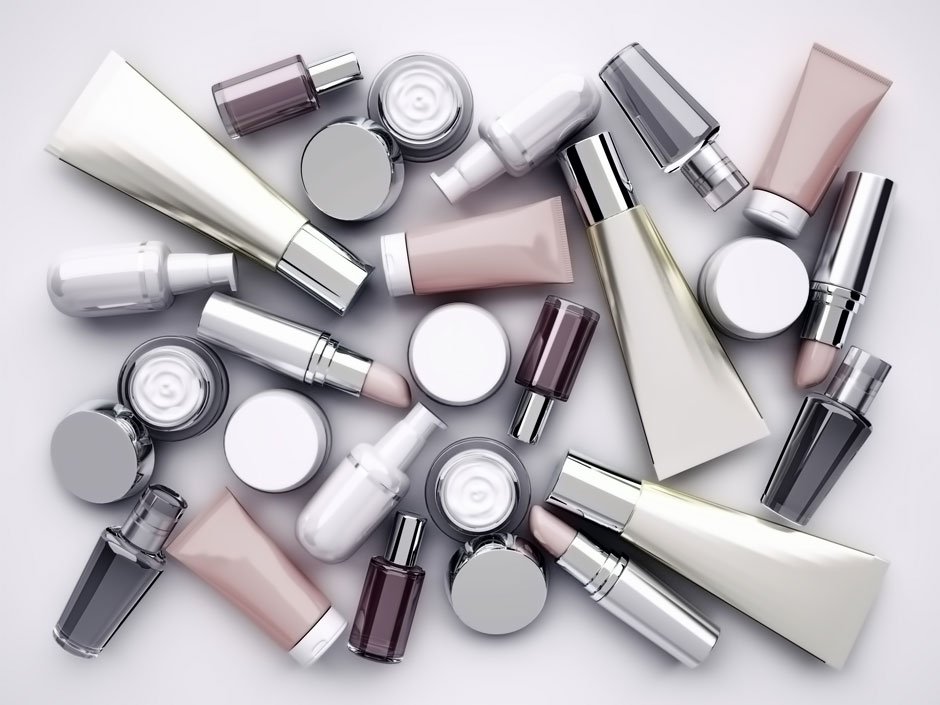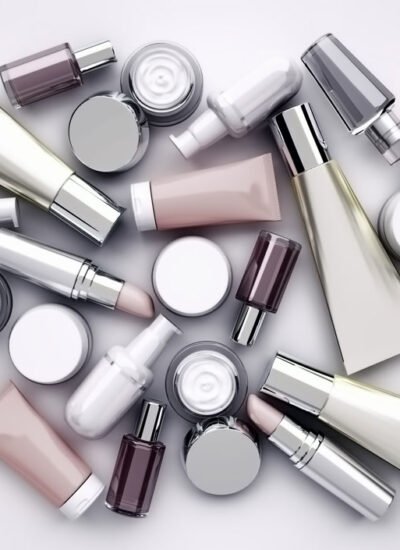 American women apply 12 personal care products each day, which exposes them to 168 different chemicals. Men use 6 products and come in contact with 85 different chemicals daily.
American women apply 12 personal care products each day, which exposes them to 168 different chemicals. Men use 6 products and come in contact with 85 different chemicals daily.
These statistics paint a troubling picture. Reports from 595 cosmetics manufacturers show they use 88 chemicals in more than 73,000 products that link to cancer, birth defects, or reproductive harm. The FDA has banned just 11 chemicals out of 10,000+ used in beauty products, while other countries have prohibited over 1,400 chemicals in cosmetics.
Learning about harmful skincare ingredients is vital to protect our health. Chemical exposure risks become more serious especially when you have pregnancy and early development stages. Substances like parabens and phthalates can create real health threats.
Let’s take a closer look at how to spot harmful ingredients in your beauty products and make safer choices for your skincare routine. This piece will help you protect yourself and your family by making informed decisions.
Understanding Toxic Ingredients in Skincare Products
New research shows alarming discoveries about toxic ingredients in personal care products. Scientists have found that all but one of eight ingredients among the 82,000 used in these products are industrial chemicals. These include carcinogens, pesticides, and hormone disruptors.
Common harmful chemicals to watch for
Formaldehyde-releasing preservatives, parabens, and phthalates top the list of harmful ingredients found most often. Tests have detected benzene in many aerosol products, with some samples reaching levels 170 times above FDA acceptable limits. On top of that, it turns out that mercury exists in skin lightening products, while hair dyes contain chemicals linked to breast and uterine cancer.
What it all means
These chemicals create serious health risks in different ways. Phthalates and parabens mess with hormone function and can affect fertility and reproductive health. The known carcinogen formaldehyde irritates your eyes, nose, and throat right away. Long-term exposure leads to more serious health problems.
High-risk product categories to inspect
Research shows you need to watch out for these products:
- Hair products (straighteners, dyes, conditioners)
- Skin lightening and anti-aging creams
- Eye makeup preparations
- Products for external intimate hygiene
- Sunbathing products
The situation becomes more worrying as studies reveal that 97% of people tested had exposure to one or more phthalates. Even low-level exposure can build up over time. Understanding and avoiding these harmful ingredients in daily routines is vital.
How to Read Beauty Product Labels Like a Pro
Beauty product label decoding needs specific terminology and standard naming rules. Note that cosmetic products must follow the International Nomenclature of Cosmetic Ingredients (INCI) system. This system provides standard names for ingredients that brands and countries use worldwide.
Decoding ingredient list terminology
The INCI system relies on scientific names that make ingredients look complex. To cite an instance, you’ll see vitamin E as “tocopherol” and vitamin C as “ascorbic acid”. Some ingredients might sound like chemicals but are completely safe. You should get familiar with common INCI names instead of making quick judgments based on how they look.
Understanding concentration levels
Products list ingredients by how much they contain, with the highest amounts coming first. This rule works only for ingredients above 1% concentration. Anything below 1% can appear anywhere in the list, which makes it hard to know exact amounts in the formula.
These are the most important areas to look at on labels:
- First five ingredients (they make up most of the formula)
- Active ingredients (listed separately in over-the-counter products)
- Color additives (can appear anywhere regardless of amount)
Spotting Hidden Toxic Ingredients in Beauty Products
Hair products, such as straighteners and dyes, rank among the highest-risk beauty items due to their use of harmful chemicals. Recent studies reveal a link between long-term use of chemical hair relaxers and an increased risk of uterine cancer and other serious health conditions. Victims of hair relaxer-related illnesses have filed lawsuits, with estimated settlements ranging from $120,000 to $150,000 for severe cases like cancer. This underscores the importance of scrutinizing product labels and understanding the potential health impacts of the ingredients you apply daily.
By addressing these hidden dangers, you can make informed decisions to protect your health while navigating the world of beauty products.
Digital Tools for Checking Product Safety
Digital tools have made it easier to spot toxic ingredients in skincare products. These smart apps and databases work like personal ingredient checkers that instantly tell you if a product is safe to use.
Best apps for ingredient analysis
Think Dirty leads the pack with a database of over 850,000 cosmetics and personal care products. The app rates product safety on a scale of 0-10. You can also try the EWG Healthy Living app that covers more than 120,000 products. Yuka is another great option with about 500,000 cosmetic items and adds 800 new products daily.
Online databases and resources
The Environmental Working Group’s Skin Deep database is the life-blood of ingredient safety information. It provides detailed safety checks for over 74,000 products. These databases match ingredients against nearly 60 toxicity and regulatory databases to give you accurate safety details. The Cosmetic Ingredient Review (CIR) takes a deep dive into individual chemical compounds and provides scientific analysis of cosmetic ingredients.
How to use digital tools effectively
You can start by scanning product barcodes or typing product names in your favorite app. These tools give you:
- Ingredient safety ratings
- Clear explanations of health effects
- Safer product alternatives
- Scientific research links that back their ratings
The Think Dirty app focuses on chemical content analysis. Users can track their products and see how they’re doing in their switch to cleaner beauty products. These digital tools are a great way to get smarter about skincare safety. You can make better choices about personal care products with this knowledge at your fingertips.
Creating Your Safe Beauty Action Plan
The path to safer beauty products needs a well-planned strategy. Research shows women typically use 12 different beauty products each day, which exposes them to almost 200 chemicals. This makes a systematic transition vital.
Prioritizing which products to replace first
Let’s take a closer look at items that might pose the highest potential risk. We focused on:
- Products that stay on your skin longer
- Items you use near sensitive areas like your eyes and mouth
- Daily products that cover large skin areas
- Products with known harmful ingredients
Research shows 75% of buyers will spend more money on customized beauty experiences. A smart replacement strategy helps make better choices.
Building a clean beauty routine gradually
Your best approach isn’t throwing everything out at once. Studies show replacing products as they run out is the quickest way to make changes. This lets you evaluate new products properly while watching your budget. Yes, it is best to start with one category, like daily moisturizers or cleansers, before moving to items you use less often.
Tips for finding safer alternatives
The best place to start is with trusted retailers who really check their products. Research shows top clean beauty retailers have experts who examine brands carefully before selling them. You can also look for products with fewer ingredients since more ingredients don’t always mean better results.
Stay away from products that list “fragrance” as an ingredient because companies can legally hide hundreds of chemicals under this term. Over the last several years, many brands now share their fragrance ingredients openly, which makes them a safer option. Think over products that serve multiple purposes to lower your overall chemical exposure.
Note that “natural” or “organic” claims might not mean much since these terms don’t have strict regulatory guidelines. Your best bet is to rely on third-party certifications and clear ingredient lists to make your choices.
Conclusion
Building a healthier skincare routine becomes easier when you have the right knowledge and tools. Anyone can make safer beauty choices by understanding product labels, spotting harmful ingredients, and using digital safety tools. These steps strengthen our ability to make better decisions about our long-term health.
Small changes add up substantially over time. You don’t need to replace everything at once. The best approach starts with daily-use products and moves gradually toward safer alternatives that create lasting positive changes in your beauty routine.
New research continues to shape our understanding of ingredient safety, which remains significant. We can substantially reduce our exposure to harmful chemicals by carefully selecting products and consistently checking labels. This approach lets us enjoy effective skincare products that line up with our health goals.



Leave a Reply